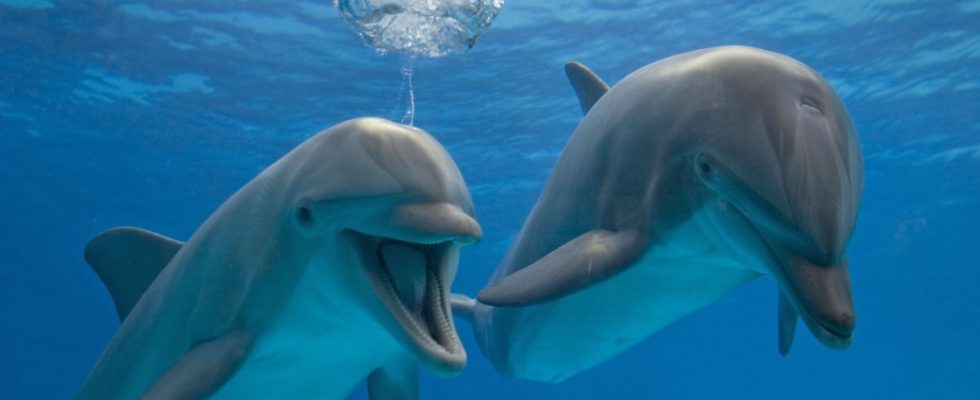High-pitched voices, clear pronunciation, and longer pauses between words: when older people talk to babies or young children, they usually change the way they speak and the pitch of their voice instinctively. But not only people use the so-called baby talk. Dolphins also communicate differently with their offspring than with adult animals, like an international team of researchers in the science journal PNAS writes. According to this, bottlenose dolphins (Tursiops truncatus) change their characteristic whistles when communicating with their calves.
According to studies that have observed human babies in language acquisition, the typical way people talk to a baby or toddler can help with language acquisition, among other things. There is very little evidence of similar behavior in animals, the researchers, who work in the US, Italy, the UK and Denmark, write in PNAS.
In the case of dolphins, baby speech is shown by altered whistles. These whistles can differ greatly due to the sometimes pronounced adjustments in frequency. In this way, they partly resemble the function of human language. The authors of the study assume that the special communication of the dolphin mothers with the offspring could serve to increase the attention, create an emotional bond and promote the vocal learning of the calves.
A population of bottlenose dolphins in Sarasota Bay, a lagoon on the west coast of the US state of Florida, was studied by researchers led by Laela Sayigh. The dolphins were temporarily captured for this purpose, and the mothers were then alternately brought together with their calves or other adult animals. During the gatherings, calves and mothers exchanged whistles almost continuously. The researchers noticed that the mothers whistled with significantly higher maximum frequencies and larger frequency deviations when they were with their calves.

